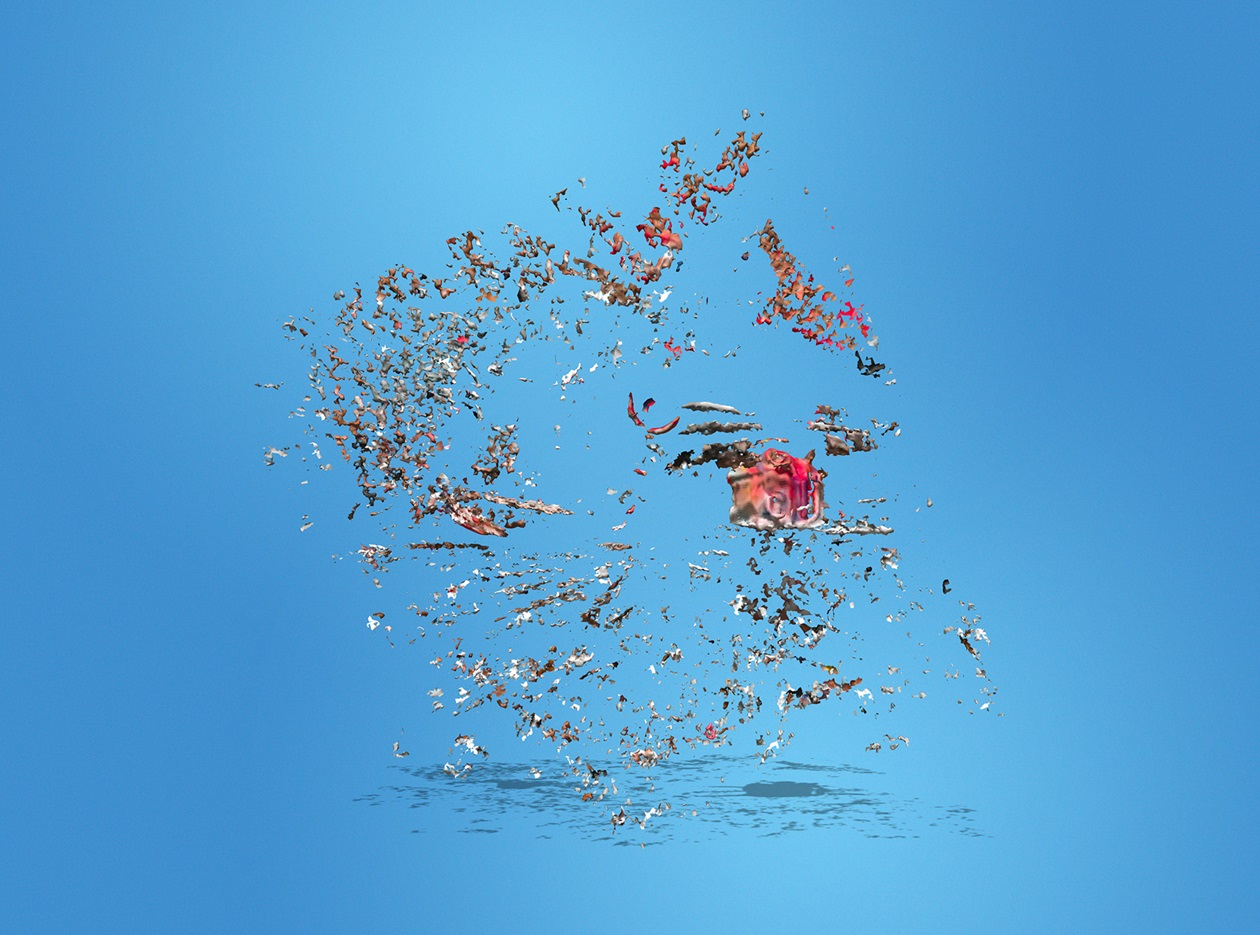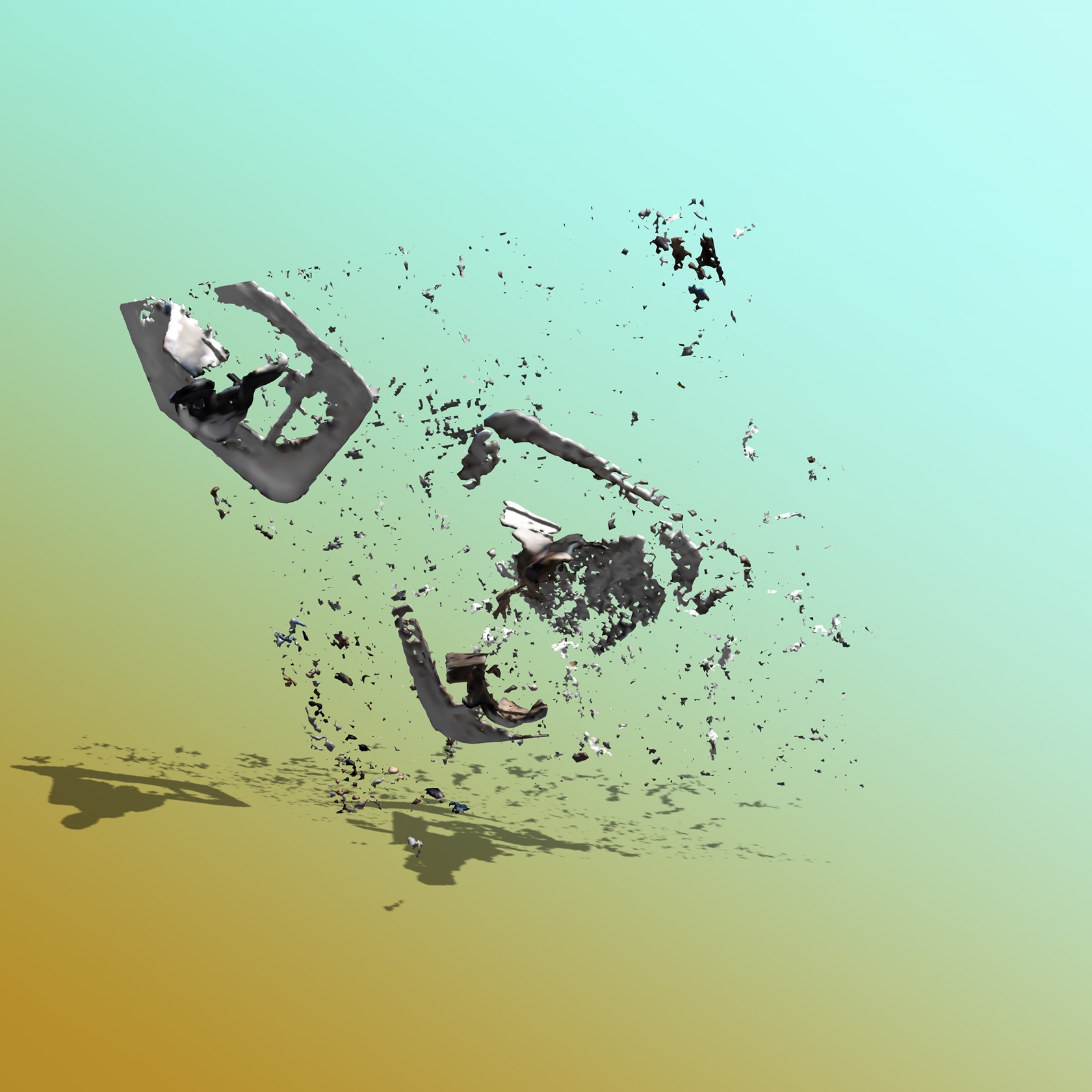Exhibition Runs Feb. 26-April 4, Reception Feb. 27
Paho Mann employs unique techniques in his approach to art. The Arizona artist creates tabletop arrangements from discarded technology and then photographs them as still-life presentations, generating eye-catching images – and conversation starters.
Some of Mann’s works will be on display in an Angelina College exhibition running Feb. 26 through April 4 in the Angelina Center for the Arts Gallery on the AC campus. An artist’s reception and talk will take place from 6-7:30 p.m. on Tuesday, Feb. 27 in the ACA foyer.

According to a release, Mann utilizes a combination of traditional photographic approaches, 3D scanning and removal of “temporary photogrammetry software files” before creating his own digital images showing the distortion and reconstruction of the original scene. The focus, according to the release, is to “provide fluidity and conversation between computer vision and human vision.”

Mann currently serves as an Associate Professor of Photography at the University of North Texas. Galleri Urbane in Dallas represents the artist. Mann received his Master of Fine Arts degree from Arizona State University.
From the artist’s bio:
“Paho Mann’s work has been included in exhibitions at the Arizona State University Art Museum (Tempe, AZ), Tucson Museum of Art (Tucson, AZ), Walker Art Center (Minneapolis, MN) and the Carnegie Museum of Art (Pittsburgh, PA) among others. Mann’s work is included in the collections of the Tucson Museum of Art, the Museum at Texas Tech University, the Nerman Museum of Contemporary Art and the City of Phoenix Public Art Program.”
The gallery and reception will be open to the public. Admission to both the exhibition and reception are free.
For further information regarding the exhibition, contact Angelina College Art Curator Le’Anne Alexander at lalexander@angelina.edu.
For other information regarding Angelina College events, contact Krista Brown at kbrown@angelina.edu.
ARTIST’S PROJECT STATEMENT:
Paho Mann investigates the personal and cultural relationships to objects we collect to address shifting values, perceptions, and memory. In the project, Fragmented Cameras, Mann used a consumer-grade 3D scanner to scan historic and obsolete cameras ranging from early stereoscopic cameras to first-generation iPhones. These images explore connections between new and historic imaging technologies. Often, the use of an emergent technology results in some deterioration in quality – in using consumer grade 3D scanning technology the scans often depict objects as fragmented versions of themselves, almost as if they have exploded. This becomes a metaphor for the constant transition of photographic technology and the use of new technology to comment on increasingly obsolete formats of historic image making. The new technology displaces the old, reflecting a tempestuous relationship between the two.
From its inception photography has been thought of as a way to replicate human vision, making copies of the real. This link to the real is intertwined with photography’s relationship to new technology, resulting in various possibilities of how to depict reality. But photography’s fixed vantage point always shows only one possibility of reality or truth. Stereoscopic cameras were an early example of a new technology shifting expectations of how photography replicated human vision, attempting to expand this singular vantage point of a photograph to include the depth and physicality associated with human perception. Among the cameras Mann scanned for this project are several stereoscopic cameras ranging from early 19th century examples to 20th century disposable kodak film 3D cameras. As these historic cameras become more obsolete so do the ways that they claim to represent the world.
In the studio, Mann imports the 3D scans into Photoshop, a traditional 2D image editing software. Here he adds colorful backgrounds using color swatches from photography studio backdrops and by sampling the colors of the original cameras. Mann manipulates lighting inside the software, much like a product or portrait photographer would do in a lighting studio. The 3D scan is cropped to reflect the aspect ratio of the original camera.
Mann sees historic ties between the desires embedded in the stereoscopic cameras to the dual-camera often found in our cell phones to computational photography and the virtual worlds made available through 3D scanning technologies. Through his practice of allowing the 3D scans to glitch, Mann calls attention to the way lens-based media only mediates, but never truly represents reality.






